Advertisement
Climate change is ravaging the oceans. Some startups see a solution in marine carbon capture
Resume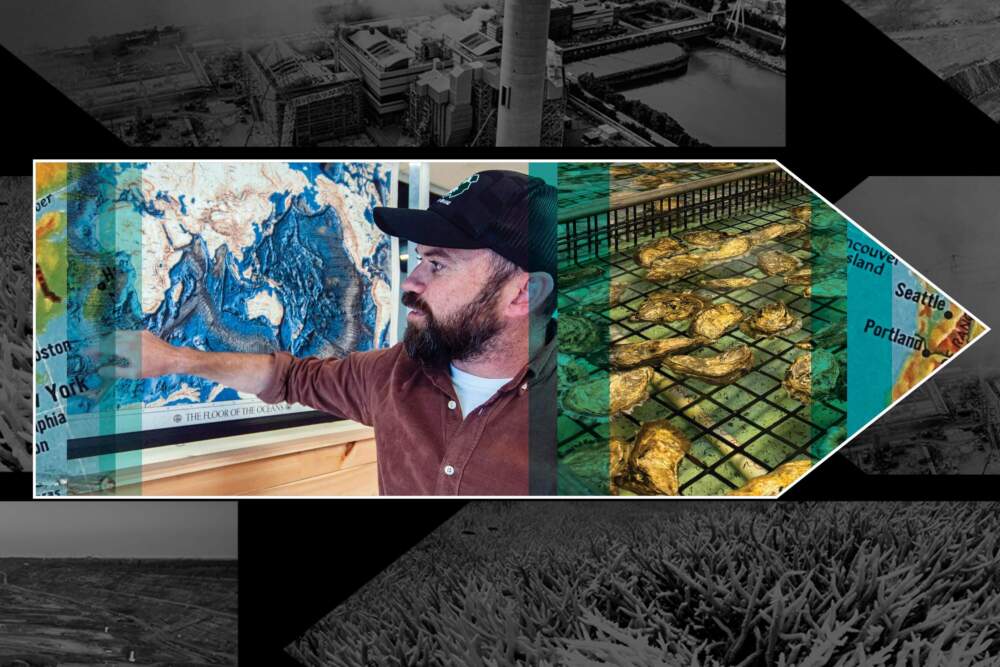
Find out more about our Reverse Course series here.
With the flip of a switch at the Pacific Northwest National Laboratory’s seaside facility in Sequim, Washington, a tangle of pipes and filters whirrs into action, scrubbing acid from the cool gray waters of the Salish Sea.
It’s the pilot project of Ebb Carbon, one of several companies building a business on ocean carbon removal technology. As money pours into companies promising to take greenhouse gasses out of the atmosphere, there’s a small but fast-growing sector of startups that want to leverage one of the world’s biggest carbon sinks to clean up humanity's pollution: the ocean.
"The ocean basically provides this huge surface for gas exchange for free," says Ebb co-founder Matthew Eisaman. “We were trying to think of the lowest-cost way to do this, and you sort of naturally come to rely on Earth systems that are already happening anyway.”
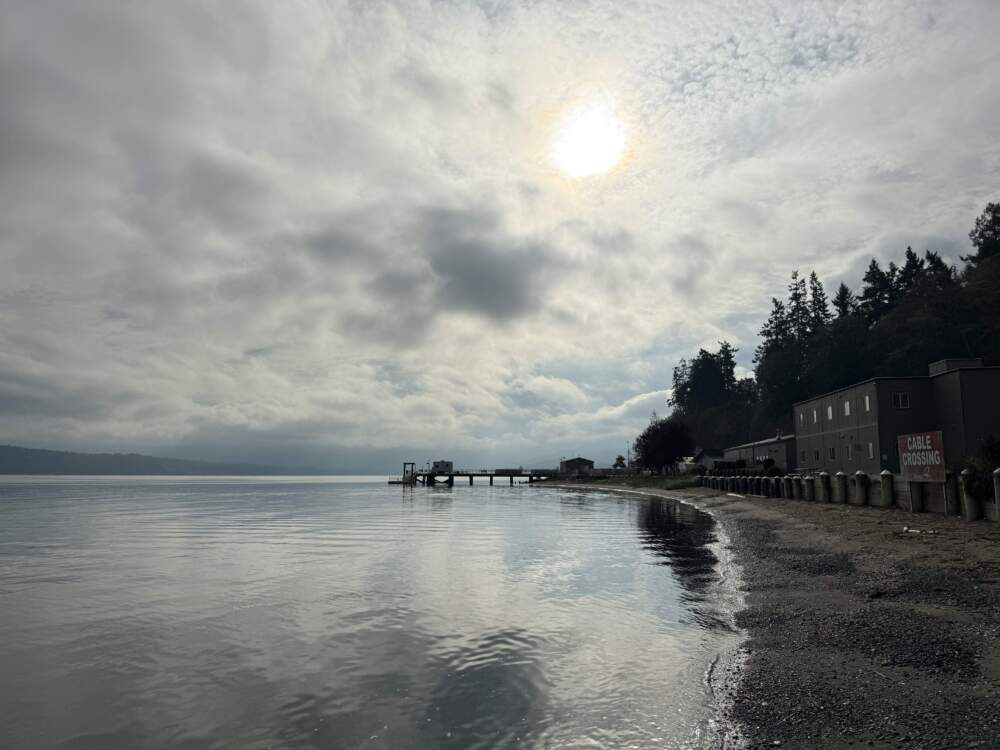
The system Eisaman is referring to is the carbon cycle. Carbon dioxide in the atmosphere naturally seeps in and out of the ocean’s surface waters, but marine organisms take up some of it to build things like shells and coral skeletons. When they die, some of that carbon sinks and is stored for eons in the ocean’s depths.
But carbon dioxide also makes seawater more acidic. So much of humanity’s carbon pollution has ended up in the ocean that it’s impeding those sea creatures’ abilities to grow.
Ebb’s device neutralizes the acid in seawater and resets the natural system so it can lock up even more carbon deep in the ocean. If carbon dioxide is giving the ocean acid reflux, Eisaman says, think of this as giving it a Tums.
“Nature has shown us what works,” says Ben Tarbell, another co-founder. “If we can nudge those ocean processes and those natural ocean ecosystems, we can drive something that can scale very cost-effectively."
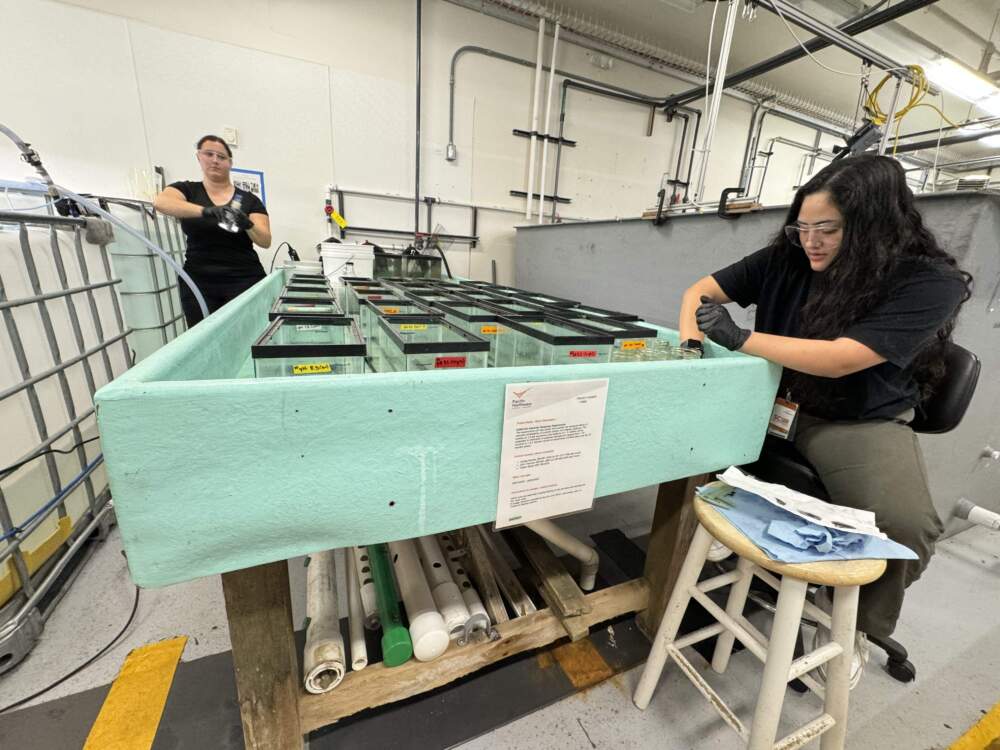
This system in Sequim Bay removes about 100 tons of CO2 per year, nowhere near the 1 billion tons per year that some scientists say is necessary, but Tarbell says they hope to scale up by plugging into places that already filter a lot of seawater like desalination plants.
Seashell SOS
Next to Ebb’s system, scientists at the Pacific Northwest National Lab are testing whether “enhancing ocean alkalinity,” as Ebb and others call it, could also help slow or reverse the effects of ocean acidification.
Researchers are raising shellfish in tanks and jars full of water treated by Ebb to different levels of acidification, their pH levels scrawled on pieces of red, orange and yellow tape.
It would be impossible to filter enough ocean water to undo ocean acidification around the world, but the National Lab’s Nicholas Ward says it might be possible to mitigate its effects on a local level, like in a bay where water circulates slowly.
“It’s a little early to tell,” says Ward, “but we are definitely seeing responses both in the chemistry and some of the biology.”
A solution like that would be welcomed by people like Bill Dewey. He has seen the problem firsthand, working with the Taylor Shellfish hatchery in Washington’s Hood Canal.
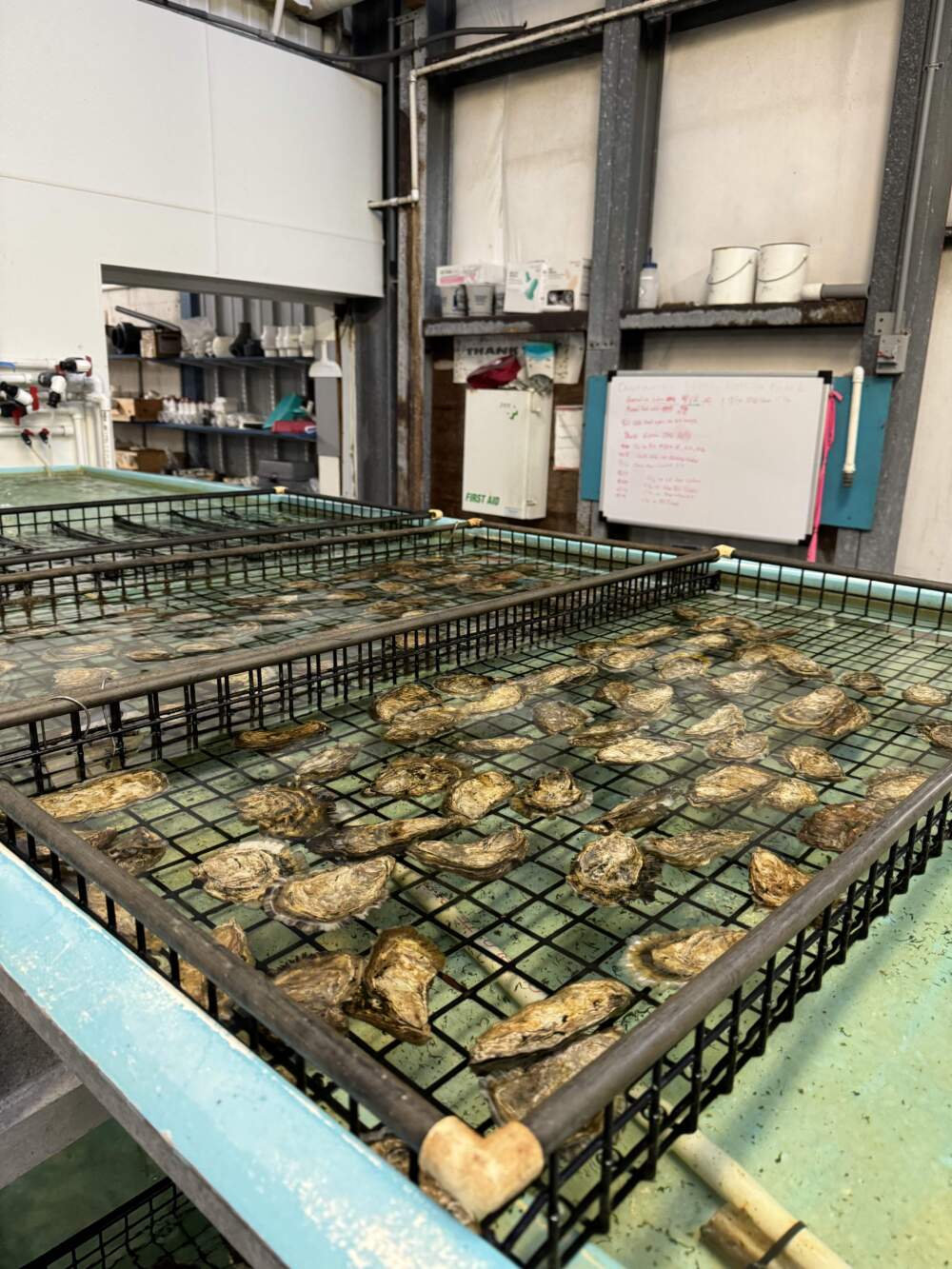
Fifteen years ago, shellfish populations crashed across the region and alerted many people here to the reality of ocean acidification. The state stepped in, and some hatcheries found temporary solutions. Taylor Shellfish installed a sodium carbonate pump that treats the water coming into its warehouse hatchery and keeps the pH steady.
“We’ve got a workaround, but we’re only treating 400 gallons a minute,” Dewey says, standing next to trays of oysters and buckets of geoducks. “As conditions get worse it’s going to start to affect the seed in our nurseries and the animals on our farms. I don’t want to turn my back on any potential solution at this point.”
Dewey says he hopes carbon removal can undo some of the damage climate change has done to the oceans, but as someone whose livelihood depends on the water, he says, he’s only “cautiously optimistic.”
It might not take new technology. Studies have found native eelgrass and other seagrasses could naturally act as buffers against ocean acidification. Eelgrass is endangered, and restoring its natural habitat is part of climate plans in the Pacific Northwest.
Geoengineering
When it comes to ocean carbon removal companies, there are plenty of fish in the sea. Equatic treats ocean water much like Ebb, but extracts hydrogen. Planetary Technologies also wants to dose ocean water with antacids. Brilliant Planet is farming algae and burying it in the desert.
Entrepreneurs in the space say they welcome the competition, and researchers agree the more solutions that can be safely tested, the better.
"Developing all of these early-stage approaches for marine carbon dioxide removal in parallel is critical,” says Chinmayee Subban of the Pacific Northwest National Lab.
“Hopefully we have enough technologies that we don’t get locked into any one of them too soon,” says Edward Sanders, chief operating officer of Equatic.
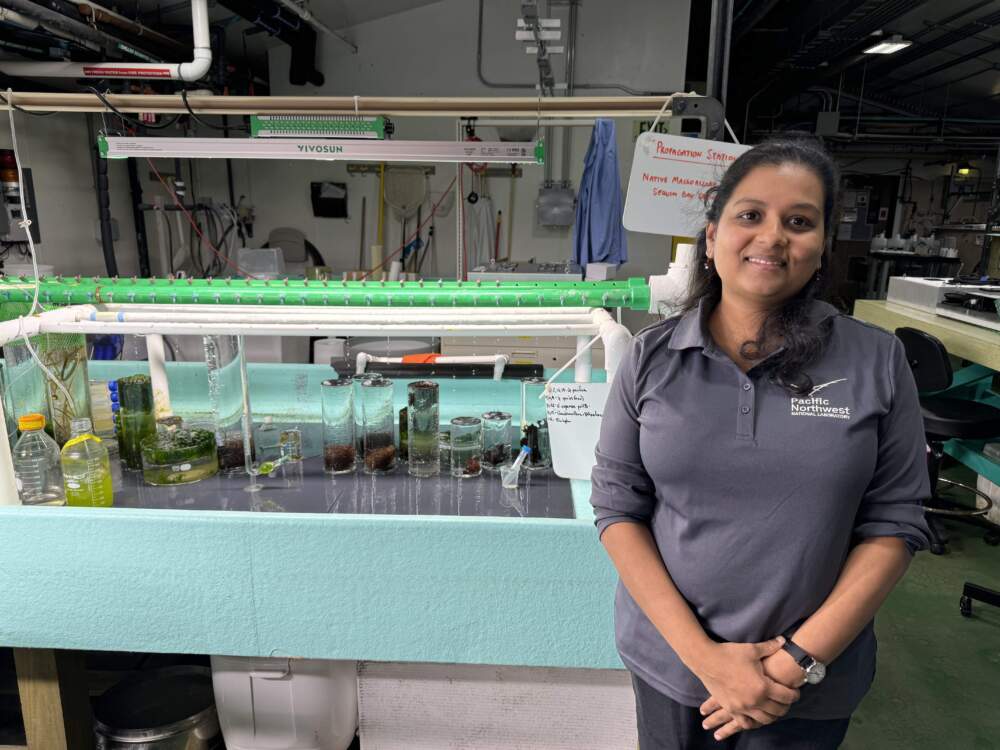
The White House recently set up a Fast-Track Action Committee on Marine Carbon Dioxide Removal to encourage more research and development.
But the idea of enlisting the ocean to clean up carbon pollution has a reputation to overcome. In 2012 a scientist dumped 120 tons of iron sulfate dust off the coast of British Columbia to try to spur the growth of carbon-eating algae. Canadian authorities investigated him for illegal dumping, and his experiment spurred a lot of uncomfortable questions about who owns the ocean, and whether “geoengineering” should be on the menu as a solution to the climate crisis.
“I think of that as ocean carbon dioxide removal 1.0,” says Sifang Chen, a physicist and science advisor to the carbon removal think tank Carbon180. “But then now what I think of as ocean carbon dioxide removal 2.0, they’re doing this in a way that’s trying to be a lot more responsible.”
Chen was one of 400 scientists who signed an open letter encouraging “responsible research, development, and field testing” of these ideas because she says “the ocean doesn't have to be just a victim of climate change, it can be a solution.”
But Chen says there are legitimate questions to ask as this new industry scales: What does it mean for other people who make a living off the ocean? What are the long-term ecological risks? And who is responsible for overseeing what could be a global industry affecting the whole planet? Governments should establish legal frameworks for ocean carbon dioxide removal, Chen says, and help develop monitoring tools to verify that these companies have a positive impact.
“From an investor’s vantage point, these are still fairly risky endeavors. There are really hard engineering problems that need to be solved,” Chen says. “What we need is the kind of patient capital that is going to support these types of projects without the companies feeling like they have to rush things.”
Sarah Cooley, director of climate science at the Ocean Conservancy, also supports more research but urges caution too.
“You really have to show the receipts here,” Cooley says. “Otherwise it would just be another kind of greenwash. We have a lot of climate solutions that are shovel-ready. But honestly, electrifying our transit infrastructure is not as exciting to some people as like, ‘I’m gonna put some fairy dust in the ocean and fix everything.’”
‘Fishing for carbon’
Fish Pier in Portland, Maine, has long been a hub for the commercial fishing industry. Today, it’s also home to one of the more audacious companies trying to reel in credits for ocean carbon removal.
Marty Odlin was an engineer for his family’s fishing business, fixing engines and doing electrical work out of a stall on Fish Pier. Today that stall is bustling with employees for the company he founded in 2017, Running Tide. Odlin says now they’re fishing for carbon.
“The same tools we used to fix the boats with, now we’re developing carbon removal systems with them,” says Odlin. The carbon removal system they’re most invested in is moving biomass — or, put more simply, sinking wood to the bottom of the ocean.
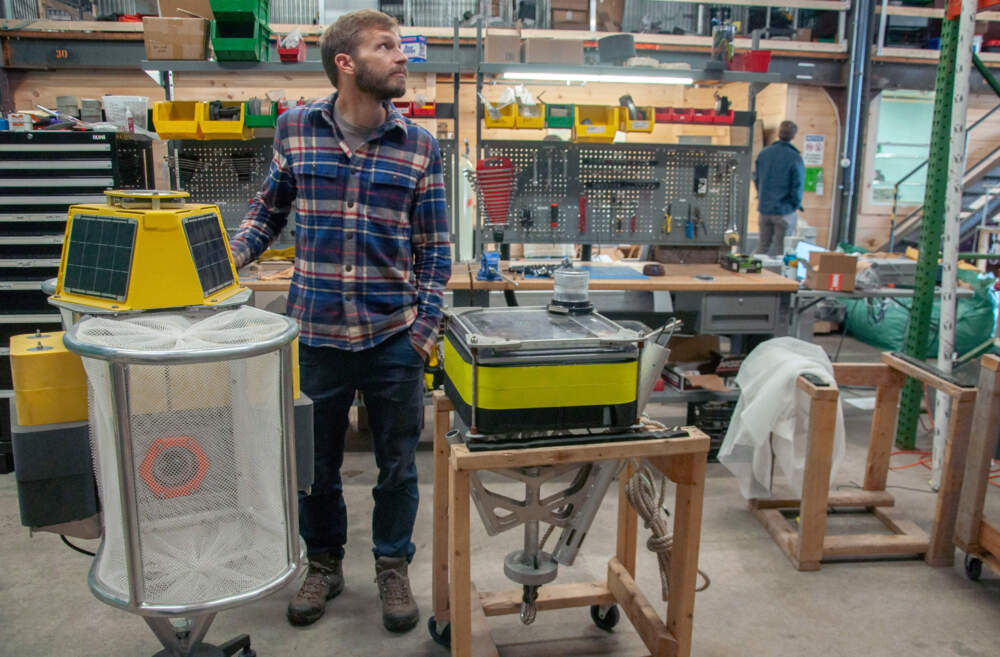
“As that wood is growing on land through photosynthesis, it’s trapping CO2 away into its cellulose. But when that tree falls over, dies and rots, all of that carbon goes right back in the atmosphere, and that’s the natural carbon cycle,” says Running Tide’s senior engineer Andrew Thompson. “We’re intervening, grabbing that wood before it rots and sinking it down into the deep ocean where that carbon is sequestered and locked away in the ocean.”
The company is getting its waste wood from Nova Scotia and is accounting for the carbon emissions of shipping it out to sea. In controlled experiments off the coast of Iceland, Running Tide says it has already sequestered at least 17,000 tons of carbon.
The company recently raised more than $50 million and counts Microsoft among its clients.
In Portland, they’re building high-tech buoys to test how they might be able to sink not just wood, but fast-growing algae and even pieces of rock to fight ocean acidification through the same chemical reactions at the heart of Ebb’s system.
It turns out the science of sinking things is surprisingly sophisticated. At Running Tide’s Ocean Hub, they’ve converted a former lumber warehouse into a marine science lab. Chemists in white coats pore over beakers, rows of wave tanks slosh back and forth, testing how different materials break down in the water, and outside a row of shipping containers converted into marine greenhouses are cultivating sugar kelp, sea lettuce and a smorgasbord of different algae.
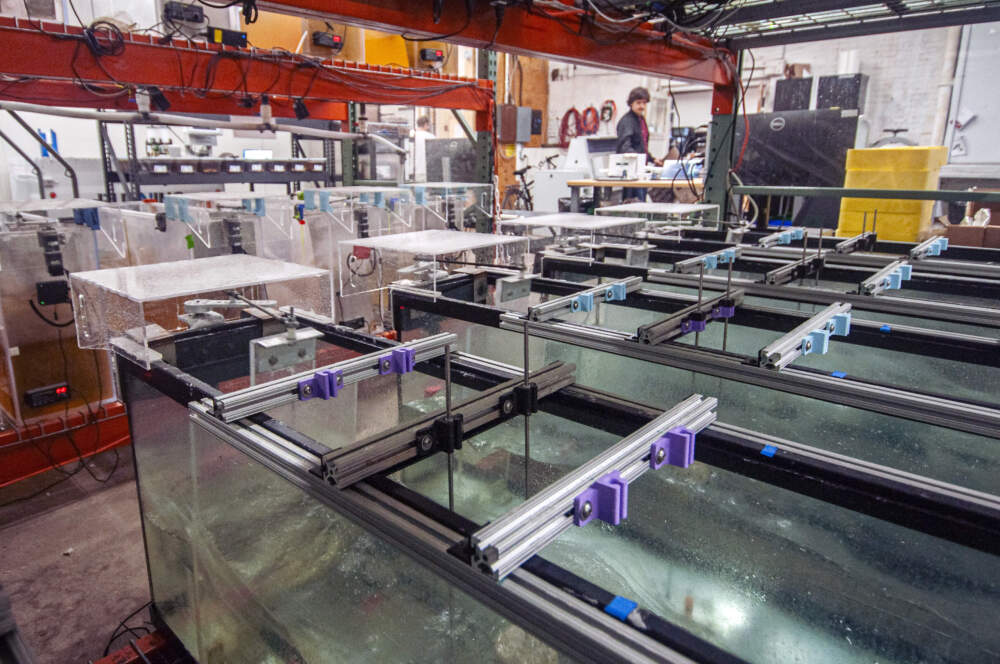
Running Tide’s labs are buzzing with activity and a startup vibe that wouldn’t be out of place in Silicon Valley.
“It’s fishing, so by any means necessary to go get the job done,” says Odlin. “We’ll do whatever it takes.”
“Whatever it takes” is the ethos of many entrepreneurs in carbon removal and elsewhere who try to build businesses on early-stage science. To critics who argue carbon removal is a distraction, Odlin says companies like Running Tide are not trying to replace efforts to decarbonize the economy; that work needs to happen simultaneously, he says.
Just as early investments and research into renewable energy took decades to produce huge growth in that industry, Odlin says the world needs to start developing carbon removal solutions now if we want to have them at scale before the end of the century.
“The only thing in my head is we are not moving fast enough,” says Odlin. “We are absolutely worried about the second, third, fourth order effects. We’re doing everything we can, but the idea that we can sit back and wait and try to get it all perfect before we get after it, not gonna happen. Everyone that’s clutching pearls here, drop the pearls and grab a shovel, because there’s work to get done.”
To startups promising climate solutions on a global scale, the Ocean Conservancy’s Sarah Cooley says, “Curb your enthusiasm. There’s still a lot of time to get it right.”
“Buzz is necessary to support innovation, but the reality is that we are very far from a highly scaled-up industry,” Cooley says. “The ocean can take some experimentation, but there’s always a consequence.”
This segment aired on December 5, 2023.
